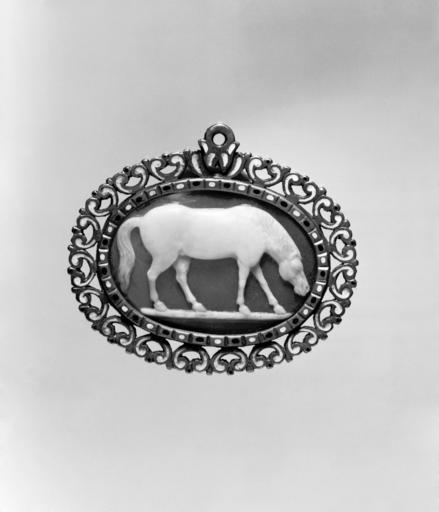MAKE A MEME
View Large Image

| View Original: | European - Cameo with Horse Grazing - Walters 42145.jpg (1544x1800) | |||
| Download: | Original | Medium | Small | Thumb |
| Courtesy of: | commons.wikimedia.org | More Like This | ||
| Keywords: European - Cameo with Horse Grazing - Walters 42145.jpg A cameo is a small stone or shell carved in raised relief The stone could be precious or semi-precious and of a single color or veined with different colors- such as onyx with white veins that could be distinguished for a striking effect as here The techniques were developed in the ancient world and the subjects are often taken from the classical tradition The market for antiquities was great in the 16th century; since the differences between a Roman and a particularly ingenious 16th-century imitation were hard to distinguish many modern pieces were offered as antiques between 1525 1600 Renaissance onyx enamel copper alloy gilt mount cm 6 1 6 9 accession number 42 145 38516 Henry Walters Baltimore date and mode of acquisition unknown Walters Art Museum Henry Walters Acquired by Henry Walters Jewelry - Ancient to Modern The Walters Art Gallery Baltimore 1979-1980 Objects of Adornment Five Thousand Years of Jewelry from the Walters Art Gallery Baltimore Cooper-Hewitt National Design Museum New York; Chrysler Museum of Art Norfolk; Carnegie Museum of Art Pittsburgh; San Antonio Museum of Art San Antonio; Philbrook Museum of Art Tulsa; Honolulu Academy of Arts Honolulu; New Orleans Museum of Art New Orleans; Milwaukee Art Museum Milwaukee; Minneapolis Institute of Arts Minneapolis; Toledo Museum of Art Toledo; The John and Mable Ringling Museum of Art Sarasota 1984-1987 Jewelry from the Walters Art Museum and the Zucker Family Collection The Walters Art Gallery Baltimore 1987 place of origin Europe Walters Art Museum license Renaissance applied arts in the Walters Art Museum Art from Europe Cameos Grazing horses | ||||